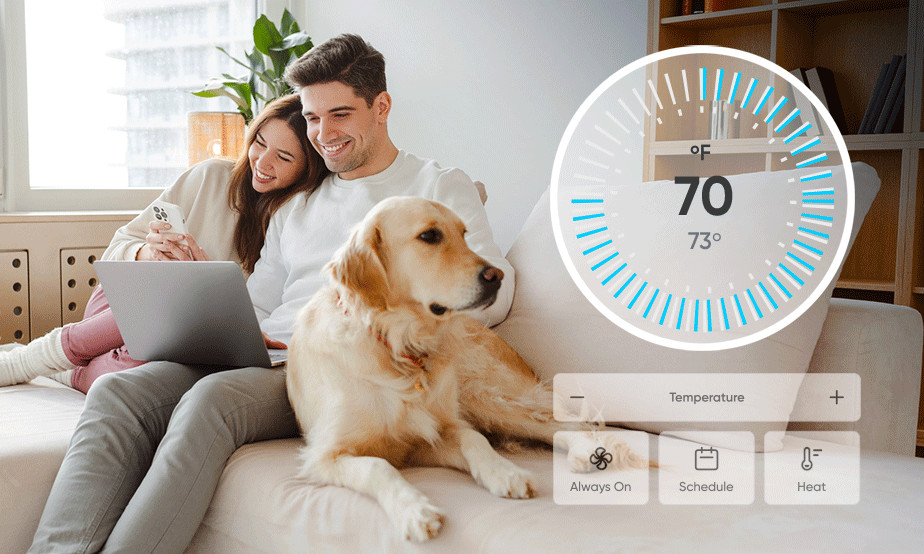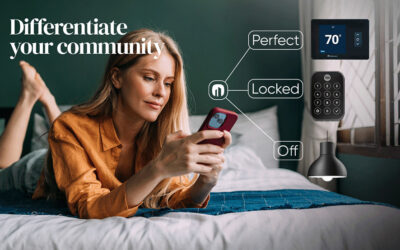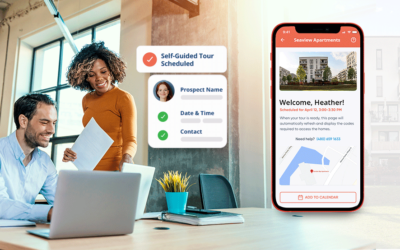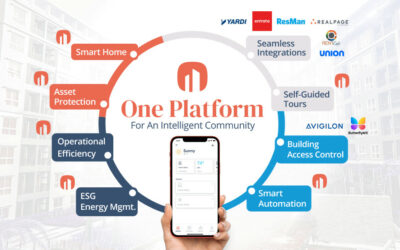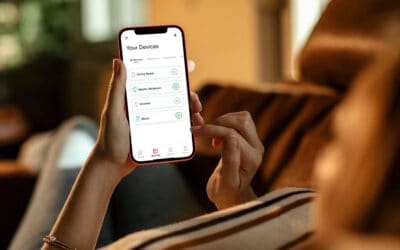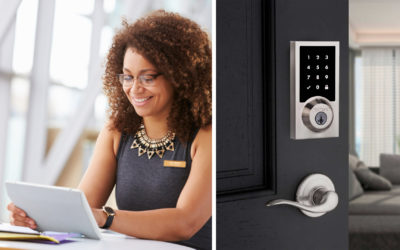The integration of smart tech into workforce housing is revolutionizing the sector, providing both residents and property management teams with a range of benefits. Contrary to the belief that smart home amenities are too costly for workforce housing, multifamily leaders like Stoneweg have proven otherwise. They are entering their third year of smart home adoption and have offered insights to their success in the video below.
Smart Tech Amenities Add Value
Market Differentiation: Offering a smart home tech package attracts renters looking for modern conveniences, helping workforce housing properties stand out in a competitive market.
Energy Savings: Smart thermostats reduce HVAC runtimes in vacant and occupied units, resulting in lower utility bills and increased affordability for residents.
Simplified Key Management: Smart locks eliminate the worry of hundreds of keys being handled around your community and far less intensive to manage.
Get Ahead of Water Leaks: Smart leak detection systems are placed in strategic areas within the apartments, sending alerts to maintenance when drips occur.
Return on Investment: Elevate your community without having to break ground or knock down walls. Compared to the cost of adding other types of amenities, smart home tech creates value all around.
Elevate your community without having to break ground or knock down walls. Compared to the cost of adding other types of amenities, smart home tech creates value all around.
Tech Amenities that Millennials Love
Smart technology amenities bring numerous benefits to workforce housing, significantly enhancing the living experience for residents while improving operational efficiency for property management teams. For residents particularly, smart devices like thermostats, lighting systems, and security features offer increased convenience, safety, and cost savings. Smart thermostats can optimize energy usage by adjusting heating and cooling based on occupancy and preferences, which reduces utility bills.
Additionally, smart locks provide keyless entry, eliminating the hassle of managing physical keys and enhancing security. These modern amenities not only improve the quality of life but also make workforce housing more attractive to prospective renters, who increasingly seek out tech-forward living environments.
Operational Efficiency
Likewise smart home technology translates to streamlined operations and reduced costs for property teams. Remote monitoring and control of smart devices allow property managers to efficiently oversee multiple units, addressing issues promptly and maintaining optimal conditions. Automated maintenance systems can detect potential problems, such as water leaks or HVAC malfunctions, before they escalate into costly repairs. This proactive approach to maintenance enhances the overall durability and sustainability of the properties. Moreover, smart home technology aids in market differentiation, helping workforce housing properties stand out in a competitive market by offering amenities that appeal to tech-savvy renters. By adopting smart solutions, property managers can achieve higher tenant satisfaction and retention rates, ultimately contributing to the long-term success and viability of workforce housing communities.
For an additional perspective on smart apartment solutions, watch an interview with Dustin Lacey at Mark-Taylor Residential. They are currently in their third year after rolling out smart home portfolio wide.
Learn More About iApartments
Read More on Smart Technology for Multifamily
Is Smart Home Tech Worth the Investment for Multifamily Operators?
In today’s competitive rental market, multifamily operators and property managers are constantly seeking ways to attract and retain residents while improving operational efficiency. Smart home technology—think smart locks, thermostats, lighting, and security...
Best Smart Home & Smart Access Solutions for Apartment Communities
When evaluating the best smart home and smart access solutions, it's important to partner with a solution provider that offers a customized balance of automation, security, and modern convenience.In today's fast-paced world, convenience, security, and efficiency are...
Centralization in Property Management: Balancing Automation and Human Touch
Centralization in property management streamlines operations by consolidating tasks like leasing, maintenance, and access control into a unified system, improving efficiency and oversight. However, while automation enhances security, reduces costs, and simplifies...
Amenities for Smart Apartment Living in Houston, TX
Smart Amenities elevate your community Elevate your Houston apartment community with innovative amenities like smart home technology, offering convenient keyless access, intelligent temperature regulation, and seamless integration with your property management...
Workforce Housing: Does It Makes Sense to Invest In Smart Home?
The workforce housing sector is often neglected when it comes to smart home technology. In fact, the most misunderstood aspect is affordability for residents.Stoneweg enhances workforce housing with smart home technologyMeet workforce housing developer, Stoneweg US...
How to offer Self-guided Tours at Your Apartment Community
What you need to offer self-guided apartment tours: (1.) Technology platform (2.) Browser-based application (3.) Smart locks (4.) Building Access Control (5.) CRM Integration.Why you should offer self-guided tours As an owner or manager of an apartment community,...
Self-Guided Tours : 5 Tips for a Successful Rollout
5 Tips to make your self-guided tours a success Offering self-guided tours at an apartment community can be a great way to provide prospective renters with flexibility and convenience, especially during times when in-person tours may not be possible or desirable....
Smart MDU Buildings: Best Practices for Integrating IoT
In the realm of property technology for smart MDU buildings, the adoption of Internet of Things (IoT) solutions has emerged as a game-changer for property managers seeking to optimize operations and enhance tenant experiences. However, within the spectrum of IoT...
How Multifamily is Turning Headwinds into Tailwinds for the Future
Innovative ways Multifamily is rethinking operations, maintenance, and leasing: Artificial intelligence helps better serve residents and free up staff Adoption of a centralized approach to specific daily operations Invest in smart tech to reduce energy costs...
The Right Balance of Smart Home Technology for Apartments
Smart home essentials for apartments Coming up with the right balance of smart home essentials ultimately depends on the needs and preferences of the residents and the goals of the property owners and managers. However, there are some general considerations that can...
Smart locks | Why apartment managers and leasing teams love them
A Keyless Way to Secure Your Apartment Unlock that door and definitely throw away the key fobs. Apartment residents and property maintenance teams love smart locks. This keyless system allows property personnel to quickly access resident units to maintain them....
10 Things Greystar Says About Smart Apartment Technology
Greystar sees importance of controlled building access Greystar has both recognized the necessity of offering competent smart-home technology and has discovered an interesting option in a growing field of emerging providers, said Andrew Livingstone, its Executive...
